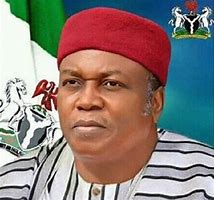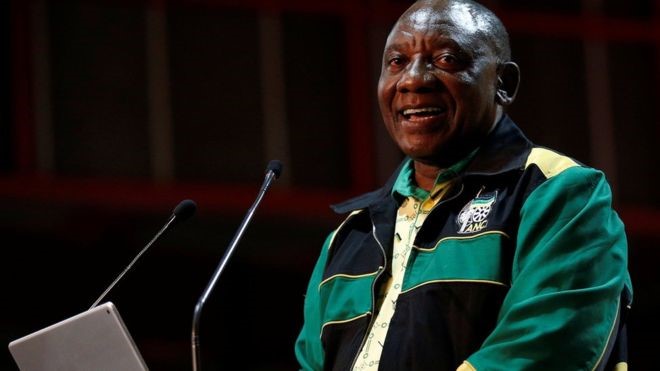
Medical intervention in DR Congo
HELP: The many afflictions of DR Congo’s brethren, By Fatoumata Oumar
In December 2017, the United Nations declared the crisis in DR Congo as the highest level of emergency, the same as Yemen, Syria and Iraq. At that time, the number of Internally Displaced Persons (IDPs) had hit 4million.
Last Tuesday, the DRC health ministry declared Ebola outbreak in the country. And it is the DRC’s ninth known outbreak of Ebola since 1976, when the deadly viral disease was first identified in then-Zaire by a Belgian-led team.
Then on Friday, the United Nations said that some 400,000 children are at risk of starving to death in Congo.
DR Congo is in the midst of many throes. The Ebola affected region of the vast strife-torn central African country is very remote and hard to reach, with a dire lack of functioning infrastructure, basically 15 hours by motorbike from the closest town.
World Health Organisation (WHO) has tallied 32 suspected or confirmed cases in the northwestern area of Bikoro, on the shores of Lake Tumbathe near the border with the Republic of Congo, including 18 deaths, between April 4 and May 9.
Given the deadly nature of Ebola, the neighbouring countries are already palpitating with Nigeria mounting airport screening.
But the World Health Organization said Friday it was preparing for “the worst case scenario”, sending some air of hope and confidence to Africa.
Following prolonged crisis in the Kasai region of the country, thousands of families in the Kasai region fled to the bush, where they stayed for months, short of food and water, many have already died.
The Kasai region, once one of the most prosperous and peaceful in DR Congo, descended into violence in 2016. The rebellion broke out in 2016 after the government refused to recognise a traditional chief, Kamina Nsapu, and imposed its own man instead. Both his supporters and the army have been accused of widespread atrocities.
The offensive and rebellion against the government has reduced the region to a ghost community.
Scores of civilians have been forced to flee, and there have been reports of murders, looting and extortion, and torture or other inhumane treatment. With people finding it difficult to sustain their livelihoods, more are becoming dependent on aid.
Refugees crossing from DR Congo into neighboring Zambia are hosted temporarily at the Kenani transit center, close to the border, where over 5,400 people are currently staying, said UNHCR.
Further north in the east of DR Congo, violence involving mostly local armed groups is plaguing North and South Kivu provinces. In North Kivu alone, over one million people are displaced, while in South Kivu, 545,000 people are internally displaced.
Meanwhile, in the Kasai region in central-southern DR Congo, displaced people and refugees who fled the violence that started over a year ago have begun to return, although 760,000 people remain displaced.
Currently over 900,000 people had gone back, but many are finding their property in ruins and family members killed
Due to the situation in the three DR Congo regions, UNHCR and partners have recently upgraded the situation the country to level 3 — the highest level of emergency.
“Some 428,000 of these people have been displaced in the past three months” said UNHCR spokesperson Adrian Edwards at a media briefing.
Edwards added that over the past year, some 100,000 Congolese have fled to neighboring countries as refugees.
Today, altogether, there are some 621,711 refugees from the DR Congo in more than 11 African countries and funding is urgently needed, said UNHCR.
“With widespread militia activities, and unrest and violence fueled by ethnic and political conflict affecting many areas, the risk of further displacement in Congo is high,” said Edwards. “The challenges of getting aid to people in need are growing fast.”
In the eastern province of Tanganyika of Congo, where some 584,000 people are internally displaced, inter-communal conflict between the Twa and Luba groups spilled into neighboring Haut-Katanga province earlier this year.
Over 922,000 people were forced to flee their homes in 2016. This was the highest number of internal displacement due to conflict recorded globally, and was one of the most startling findings of the Internal Displacement Monitoring Centre’s global report which was launched in New York.
“DR Congo has largely forgotten crisis in central Africa superseded all other crises in terms of the number of people forced to flee their homes,” said Ulrika Blom, the Norwegian Refugee Council’s Country Director in DRC. “Even Syria or Yemen’s brutal wars did not match the number of new people on the move in DRC last year.”
“Certain countries drop off the international agenda only to re-emerge a few years later with significant numbers of new displacements,” said Alexandra Bilak, Director of the Internal Displacement Monitoring Centre (IDMC). “This was the case for the Democratic Republic of the Congo, which highlights how the failure to address the underlying causes of conflict and crisis results in cyclical patterns of displacement.”
Due to emergent draught, the UN children’s agency, Unicef, has appealed for $88m (£65m) in aid for Kasai.
Unicef spokesperson Christophe Boulierac has just returned from a trip to Kasai.
“I was really shocked by what I saw there,” he told the BBC.
Mr Boulierac said he had visited three hospitals and seen children suffering from severe acute malnutrition. When he returned a few days later, several of the children had died.
“We are not saying that children are at risk of dying of malnutrition in Kasai, we are saying that children are already dying, they are dying, they have died, in silence, in the bush”.
Ebola interventions
WHO already has a team on the ground and is preparing to send up to 40 more specialists in epidemiology, logistics, contact tracing and other areas to the region in the coming week or so, WHO’s head of emergency response Peter Salama told reporters in Geneva.
At the same time, WHO and the World Food Programme are working to set up an “air-bridge” to help bring in the supplies needed, he said, adding though that only helicopters could be used until an airfield could be cleared to allow larger planes to land.
The response “is going to be extremely challenging, and very costly,” he said.
The WHO is also awaiting a green light from DRC authorities to begin a vaccination campaign in the area, using an available stockpile of an experimental vaccine, he said.
As for the risk, Salama said WHO was especially concerned about the near-term spread of the disease, including to Mbandaka, the capital of Equateur province, which has around one million inhabitants and is only a few hours away from Bikoro.
“If we see a town of that size infected with Ebola, then we are going to have a major urban outbreak,” he warned.
In addition, he said that the surrounding nine countries had been put on “high alert”. The WHO was especially concerned about the possible spread to neighbouring Republic of Congo and the Central African Republic, which has connections to the affected area through the river systems.
He stressed however that the possibility of international spread of the disease was still considered “low”, but said the situation was constantly being evaluated.
DR Congo needs world’s intervention now. Brethren are in danger and suffering. The crisis and plagued destination needs as much help or support from any part of the world or international aid organization as they could muster. The world should keep watchful eyes on DR Congo.




Recent Comments